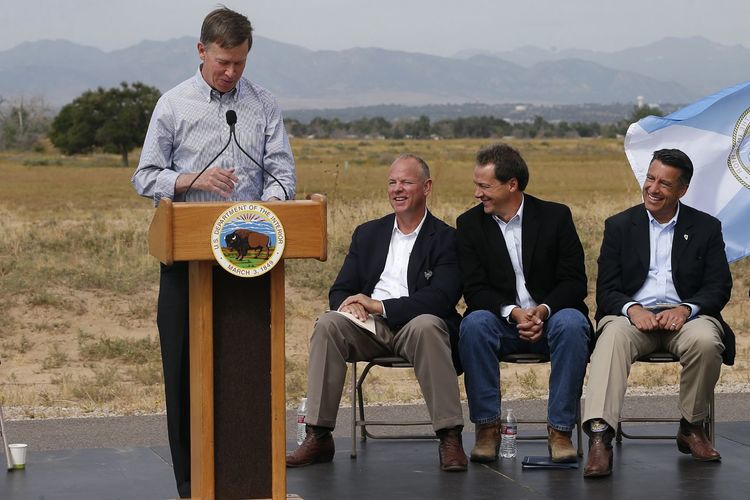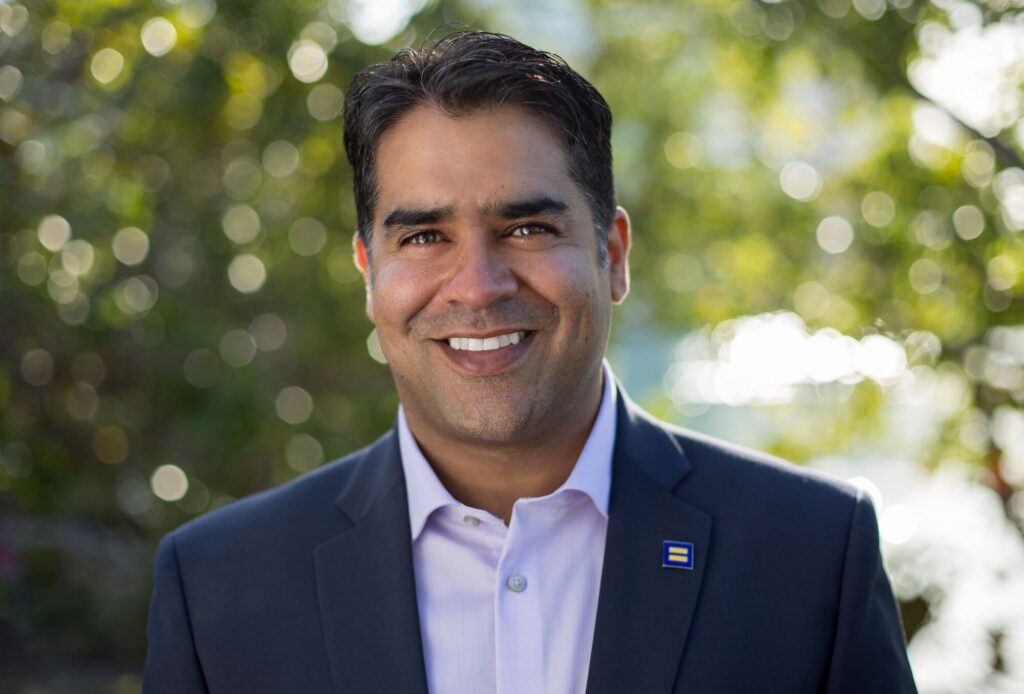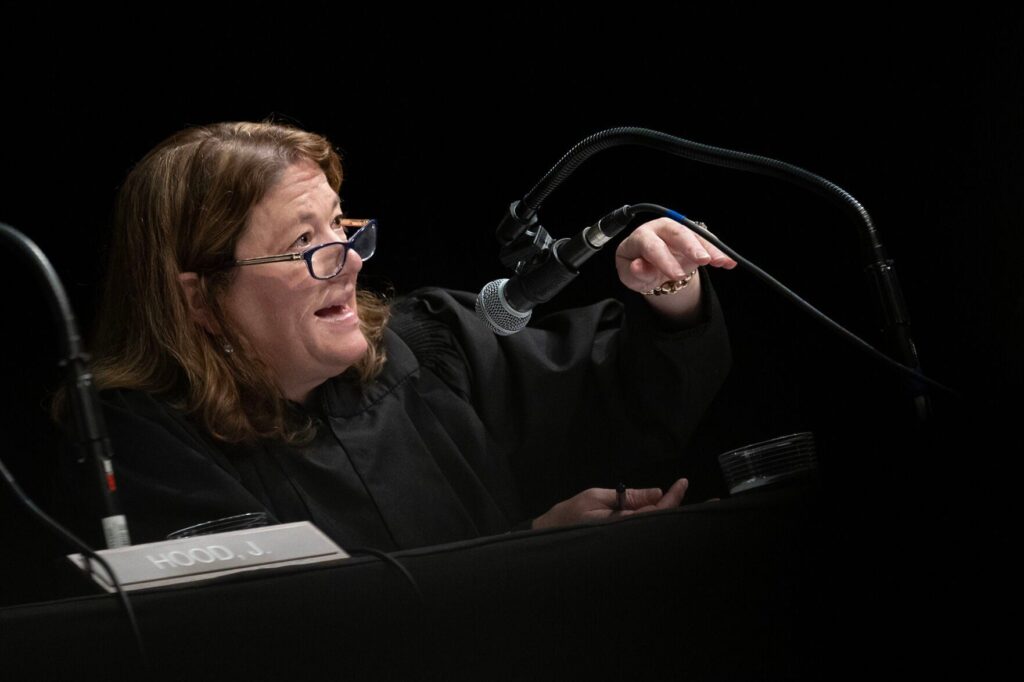Hickenlooper, Mead set aside political differences to dig into sage grouse plan

While a massive five-year collaborative push by numerous government agencies, business interests, landowners and conservation groups to avoid Endangered Species Act listing of the greater sage grouse is largely heralded as a national model, it’s clear political differences remain between the neighboring Western governors who spearheaded the effort.
Speaking at a two-day Western Governors’ Association ESA meeting that concluded on Thursday, Democratic Colorado Gov. John Hickenlooper was quick to praise the plan and the federal officials who helped make it happen.
“It’s become great sport to attack federal agencies and leaders, but [Interior Secretary] Sally Jewell stepped up, and she and her team put in so much time trying to get the sage grouse … to the right place where we could get everyone working together and really demonstrate that we could turn around the expectations on a specific species,” Hickenlooper said.
Republican Wyoming Gov. Matt Mead, the current chairman of the WGA who launched the organization’s ESA initiative, made it clear he’s not as big a fan of the ESA and the seemingly endless process that, even if it avoids listing of a species, always seems to wind up in court.
“We got across the finish line with sage grouse in terms of not having it listed, and what do we get? We go to court,” Mead said. “All you get for your efforts is to hire lawyers. Lawyers are winning on the Endangered Species Act.”
The ink had hardly dried on the landmark deal to avoid the listing, announced in September by Jewell at the Rocky Mountain Arsenal National Wildlife Refuge northeast of Denver, before lawsuits from conservation groups started flying. But Hickenlooper, who was there that day, says it was still worth it.
“I, like everybody in this room, am aware of the difficulties that the current law has presented, but we’ve seen in the last few years that we don’t have these challenge exclusively because of the law but in many cases because we haven’t had the right framework for conversation, for communication and ultimately for collaboration,” Hickenlooper said, clearly leaning toward ongoing efforts like the sage grouse plan rather than taking on the ESA.
Mead, by contrast, would like to see the law changed to streamline the process and avoid litigation, although he recognized the difficulty of getting anything passed in Congress.
“We in the West absolutely appreciate wildlife and all that it brings to us, but we also have an appreciation for our farms and ranches, our mineral development and our tourism,” Mead said, adding he drove down from Cheyenne and saw plenty of wildlife on his way to Denver.
The ESA needs to work better, he said, because since it was enacted in 1973, 2,308 species have been listed but only 33 have been taken off because of recovery — a mere 1.4-percent success rate.
In a panel discussion providing legal analysis of the ESA, Jay Tutchton, senior staff attorney for Defenders of Wildlife, said anywhere from 6,000 to 8,000 species are critically endangered, so the number of actually listed species falls woefully short. And he points out that states have already failed to properly manage wildlife if things get so bad that the feds get involved.
Tutchton argued that endless delays add more cost and time to recovery because numbers decline so precipitously each year, making hard listing deadlines critical.
“For all of us deadlines matter. We’re a deadline drive society,” Tutchton said. “They may be uncomfortable but they’re necessary to drive processes forward, and whether you agree or disagree with the result, a least somebody made a decision.”
The two governors at least seemed to appreciate working together on the effort, even if they differ somewhat on the outcome.
“Matt Mead and I worked a lot on sage grouse with the Sage Grouse Task Force, and I think that the collective efforts that came out of that work, with a long list of land management agencies, federal agencies, Western states, landowners, conservation groups, multiple industries, allowed us to get to that historic non-listing of the greater sage grouse last fall,” Hickenlooper said.
Mead agreed.
“It was critical as we worked on the sage grouse issue to have you and I as chairs for the entire initiative,” Mead said, “because we needed that bipartisan effort, we needed two states that were invested in it to the highest degree, and so I thank you for leadership there as well, John.”
A downright jovial Hickenlooper kicked off the conference Wednesday, saying he’d like to trumpet the credentials of the moderator except trumpet is a loaded word these days.
Above: A video of welcoming remarks delivered by Colorado Gov. John Hickenlooper and Wyoming Gov. Matt Mead at a workshop on species conservation funding and the Endangered Species Act at the Embassy Suites in Downtown Denver on Wednesday, March 9, 2016. Courtesy Western Governors’ Association.
“You can’t use the word Trumpeting anymore,” Hickenlooper said. “With the political discourse with the presidential primaries, trumpeting has taken on a different tone.”
He then introduced Mead with a reference to a Wyoming antelope hunt Hickenlooper first beat Mead in when the Wyoming governor missed and Hickenlooper took two shots to get a kill. Since then, Mead has been a “dead-eye” every year, Hickenlooper added.
“I want to give a special shout-out to Matt Mead, our chair of the Western Governors’ Association that over the last five or six years we’ve become very good friends,” Hickenlooper said. “You know, when he’s not schooling me at the One Shot Antelope Hunt he can be a pretty good guy.”
Colorado Politics Must-Reads:













